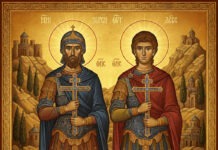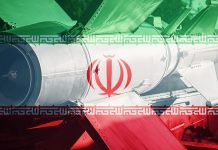Europe Between Fear and Hope
Amir Taheri/Asharq Al Awsat
Friday, 9 Jan, 2015
For the past six months the German city of Dresden has been the site of gatherings every Monday under the banner of “Saving Europe from Islamization.” The group that started the exercise calls itself “Patriotic Europeans against the Islamization of the West” (PEGIDA), and has succeeded in forming branches in 18 other German cities.
Dresden is an historic city with a distinguished cultural and artistic legacy. It is also a tragic city, reduced to rubble by British and American bombers during the final phase of the Second World War, then ransacked by the Soviet Army and then put firmly behind the iron curtain as part of Communist East Germany.
When we first visited Dresden in 1974, the city still advertised its historic wounds in the shape of charred carcasses of historic buildings, including churches, left ruined as reminders of a tragic past. But, at that time, Dresden was regaining enough courage to nurture dissent against the Soviet Empire. It was one of few places in East Germany where people dared contact foreign visitors and, more significantly, offer foreign reporters a hint of their true feelings. Therefore, it came as no surprise that, from the 1980s onwards, Dresden spearheaded a growing popular revolt against the Communist regime. By the mid-1980s Dresden had become the scene of weekly gatherings calling for the Berlin Wall to be pulled down. One key slogan was “Let People Go Free!”
Taking those weekly gatherings as a model, PEGIDA has started its own demonstrations. There are, however, a number of crucial differences between then and now. In fact, if one wished to be unkind to PEGIDA, one might suggest that the current weekly gatherings may well be mere caricatures of those historic anti-Communist demonstrations.
The first difference is that the “Let People Go Free” gatherings wanted a wall to be pulled down while PEGIDA is asking for a wall, albeit a legal and political one, to be erected. The old gatherings asked that people be free to go where they liked. The new ones ask that some people not be allowed to go where they want, even when they are fleeing murderous regimes such as that of Bashar Al-Assad in Syria.
The second difference is that the old demonstrations challenged an adversary that was easily identifiable on ideological and organizational grounds. The Soviet Union was a tangible reality, a monolith with its own ideological, political, military, and security structures and transnational nomenclature from the Elbe to the Far East. Islam, the target of PEGIDA, however, is neither a political monolith nor an ideology, and even less an empire. Nor does Islam have tanks on the streets of Dresden or any other German city for that matter. Ironically, among German cities, Dresden has one of the lowest percentages of Muslims among its population and even immigrants in general. The third and perhaps more important difference is that the old demonstrations were inspired by hope and orientated towards the future while the current ones are prompted by fear, with the promise of a return to a past that never existed.
Finally, the old anti-Communist demonstrations attracted a large measure of support across the two halves of a divided Germany and beyond and thus acted as a unifying factor. The new gatherings, however, have divided Germans, with anti-PEGIDA marches organized in more than a dozen cities, at times on a much larger scale.
Even worse, from the point of view of PEGIDA leaders, their anti-Islamic stance is, in fact, preventing a proper discussion on immigration, a real issue in Europe, and the place of Islam as the latest religion with a mass audience in the old continent. The politically correct elites of Europe find it easy to brand PEGIDA as neo-Nazis and compare their campaign to that launched by Hitler against the Jews. To close down any discussion in Germany it is often sufficient to recall the “bad old days” of the Third Reich and use the concept of “historic guilt” as a stick with which to beat those outside the political mainstream into silence and submission.
PEGIDA is pointing to a number of real problems but at the same time is offering false and, in some cases dangerous, solutions. Europe is passing through a crisis of identity prompted by the fading of its Christian heritage, the increasingly exposed shortcomings of its democracy, and loss of trust in an economic system that promises a great deal but fails to deliver. Thus, PEGIDA is part of a broader European malaise that has given a boost to radical and even extremist groups both on the left and right. Movements such as PEGIDA, including the National Front in France, UKIP in Britain, Syriza in Greece, Indignandos (Indignants) in Spain, and the Swedish Democrats among many others, feed on that malaise and, in turn, fuel it.
Europe’s cultural malaise has been a subject of introspection and speculation for more than a decade. The former Pope Benedict XVI penned two books about it, suggesting a revival of the continent’s “Christian roots,” a position that found sympathetic echoes among “free-thinking” Germans, notably the philosopher Jürgen Habermas.
Movements like PEGIDA encourage those who wish to erect a cordon sanitaire against any proper discussion of a number of complex issues including that of the relationship between Europe and its Muslim citizens. However, a cordon sanitaire could also demarcate a cultural ghetto, making it even more difficult for Europe to offer its Muslim citizens a proper space while inspiring in some Muslims a sense that they have been rejected, which, in turn, attracts thousands of young European Muslims to the deadly caricature of jihad offered by Middle Eastern terrorist groups including the Islamic State of Iraq and Syria’s start-up “caliphate”. While history shows that hope does not always inspire creativity, fear always leads to self-defeating destruction.




















